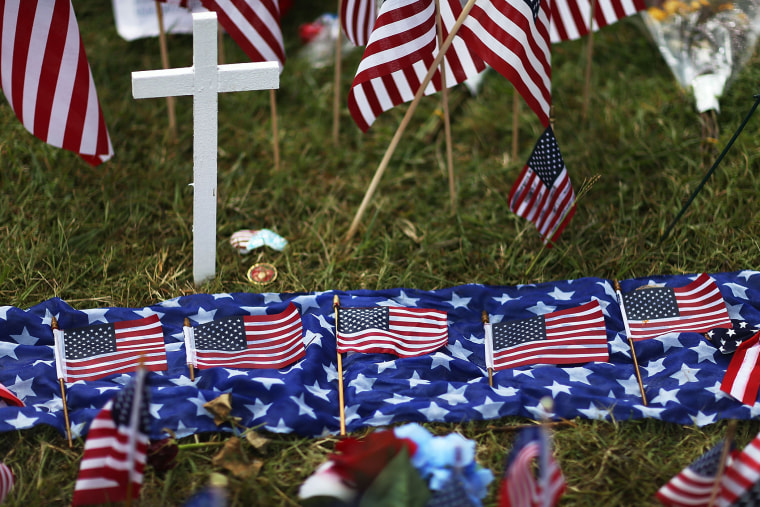Mass public shootings have grown more frequent in the United States, according to a new report by the Congressional Research Service (CRS).
The report found that in the 1970s, the U.S. experienced an average of 1.1 mass public shootings per year, a figure that rose steadily over the ensuing decades before reaching a high of 4.5 from 2010 to 2013.
Statistics on mass shootings in America have been a source of intense dispute. With no consensus over precisely what constitutes a mass shooting and no comprehensive data-set of such incidents, those on either side of the gun control debate have arrived at drastically different figures.
RELATED: Movie theaters consider metal detectors, more security after violence
The CRS report aims to provide members of Congress with a common set of facts on the issue by offering a clear definition of mass public shootings. The report defines a "mass public shooting" as an incident in which four or more victims are murdered with firearms "within one event, in at least one or more public locations." It also strove to offer the most comprehensive data set assembled so far on the occurrence of such incidents — drawing on the FBI's supplemental homicide reports and the research of Grant Duwe, a criminologist at the Minnesota Department of Corrections.
"CRS took great pains to be non-partisan and objective," Duwe told msnbc. "I don’t think they had any ideological ax to grind, but offer the most rigorous and objective point of view on this topic."
Under this criteria, last month's shootings at the Charleston African Methodist Episcopal Church in Charleston and the military recruitment office in Chattanooga, Tennessee, would qualify as mass public shootings, while the recent attack at a Louisiana movie theater — in which only two people were murdered — would not.
Still, even as the report provides a unified set of facts, it's inspiring divergent conclusions about how significant a threat mass shootings pose to public safety.
Although the report documents a fourfold rise in the frequency of mass public shootings since the 1970s, that increase becomes less stark when population is taken into account.
RELATED: 11-year-old Detroit boy charged with manslaughter
Throughout the 1970s, the number of victims of mass public shootings fluctuated between 0 and 1 per 10 million people. Since the late 1980s, that rate has oscillated between a little less than .5 and a little more than 2. Those figures do show a slight increase in such fatalities, but they also highlight just how rare mass shooting deaths are, despite their prominence in national news coverage.
The rarity of mass shootings means that a single mass casualty event can exert considerable influence on the over the overall trend line. The report notes that the uptick in mass public shootings from 2009 to 2013 was "largely driven by a few incidents in 2012. If 2012 were excluded, the averages would actually have been lower than the preceding five year period (2004-2008)."
More prevalent than mass public shootings are other categories of mass shootings like familicides — incidents in which individuals murder four or more members of their own family in a private setting — and mass killings that occur in the course of robbery or other crime. While the report found that the U.S. saw an average of 4.4 mass public shootings per year since 1999, that rate was 8.5 for familicides and 8.3 for "other felony mass shootings."
Nonetheless, the slight increase in mass public shootings in the last four decades is noteworthy, considering that the overall rate of gun crime has declined significantly over the same time period.
